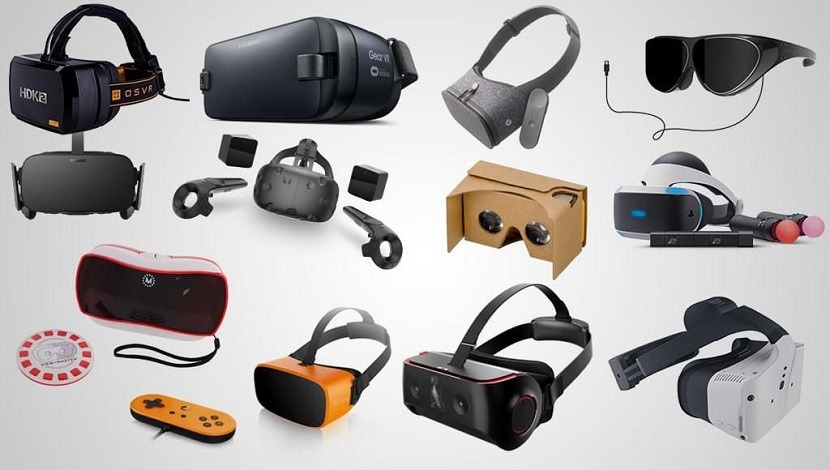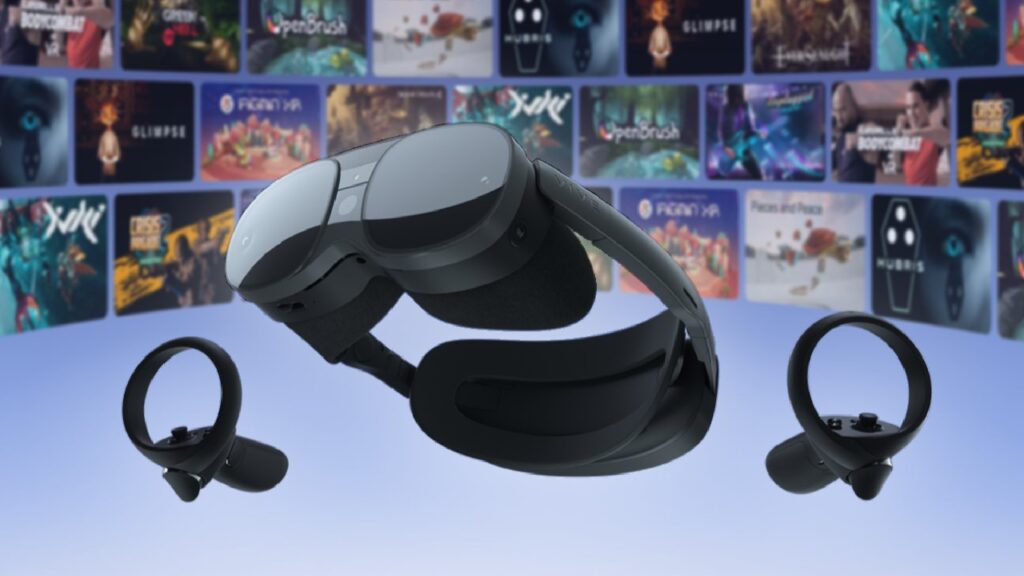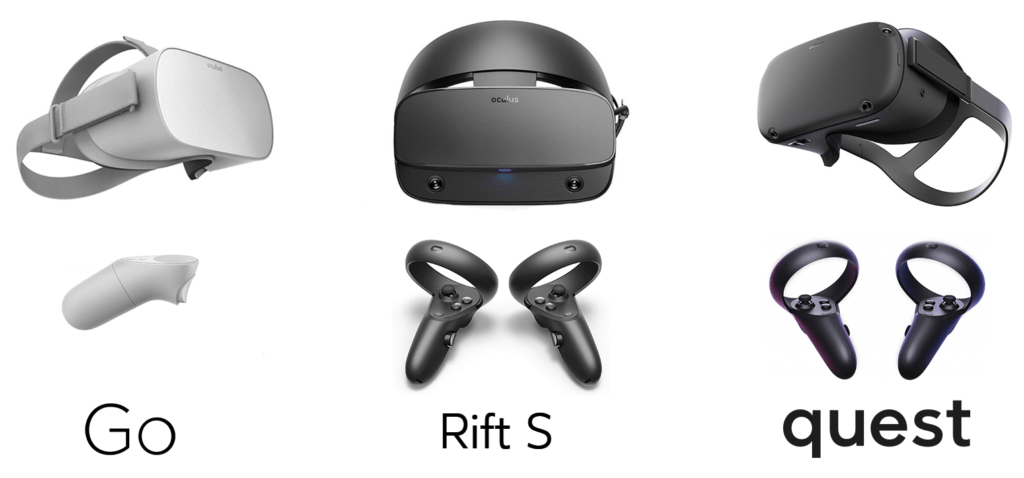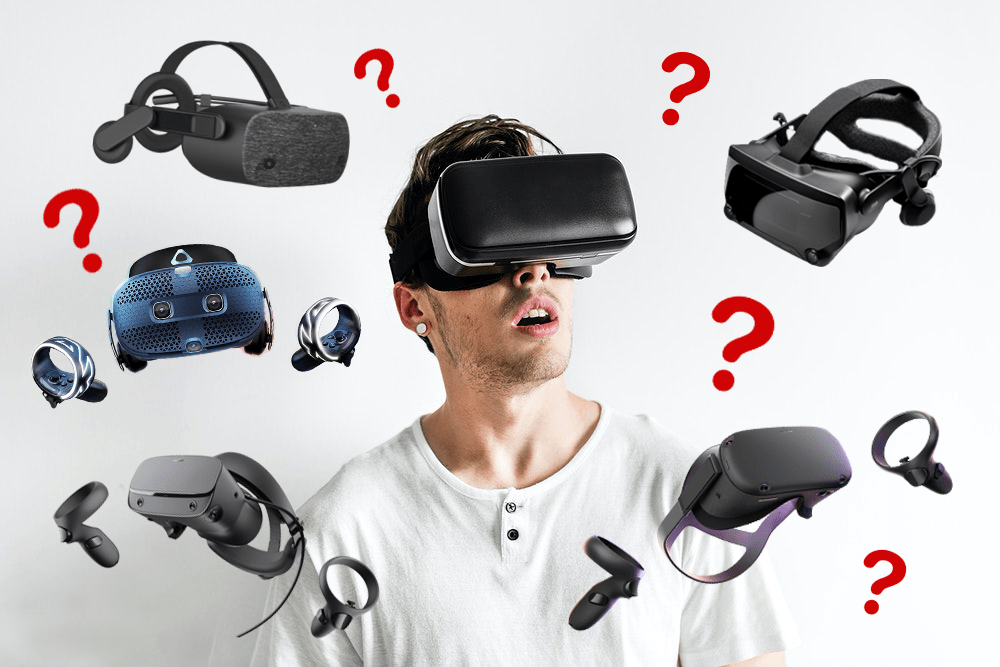Virtual Reality headsets have become increasingly popular, transforming entertainment, Education, Healthcare, and various other fields. These innovative devices immerse users in a digital environment, providing a sensory experience that can include visual, auditory, and even haptic feedback.
All types of VR headsets are designed to replace your natural environment with a virtual one, offering immersive experiences through visuals, sound, and sometimes touch.
In this detailed guide, you will learn about different brands of famous virtual reality headsets, their features, uses, prices, and battery timings.
So, in this way, you will have a chance to run through everything deeply and choose a reliable VR headset that suits your purpose and budget.
All Types of VR Headsets
VR technology has advanced significantly over the past decade, making it more accessible and varied in terms of applications and price points. VR headsets cater to many users and needs, from high-end PC-based systems to affordable mobile solutions.
There are several types of VR headsets available, each designed for specific uses and offering different features.
Understanding these categories will help you choose the best headset for your needs.
PC-Based VR Headsets
PC-based VR headsets offer the highest performance and visual fidelity.
They require a connection to a powerful computer, which handles the processing and graphics rendering.
These headsets often come with external sensors for precise tracking and can deliver highly immersive experiences.
Standalone VR Headsets
Standalone VR headsets are self-contained devices that do not require a PC or external sensors.
They have,
- Built-in processors
- Storage
- Tracking systems
- Wireless VR experience
These headsets are easy to set up and use, making them popular for casual and mobile VR applications.
Console VR Headsets
Console VR headsets are designed to work with gaming consoles like the PlayStation.
They offer a middle ground between PC-based and standalone headsets, providing good performance and ease of use.
These headsets are typically more affordable and have access to console-exclusive VR games.
Mobile VR Headsets
Mobile VR headsets use a smartphone as the display and processor. They are lightweight, portable, and often more affordable than other types of VR headsets. These headsets are ideal for casual gaming and VR experiences on the go.

All Types of VR Headsets: Learn Everything About Them
The table below offers a comprehensive comparison and highlights some of the most popular VR headsets, their manufacturers, features, uses, costs, and battery information.
| Headset Name | Company | Features | Uses | Cost | Battery |
| Oculus Rift S | Oculus/Facebook | High-resolution display, Inside-out tracking, Ergonomic design | Gaming, VR experiences, Training | $399 | N/A |
| HTC Vive Pro | HTC/Valve | High-fidelity audio, Modular tracking, High-resolution dual-OLED screens | Professional use, Simulation | $799 | N/A |
| PlayStation VR | Sony | Integrated with PlayStation, Affordable, Extensive game library | Console Gaming | $299 | N/A |
| Oculus Quest 2 | Oculus/Facebook | Standalone, Wireless, High-resolution display | Gaming, Fitness, VR experiences | $299 | 2-3 hours |
| Samsung Gear VR | Samsung | Portable, Uses smartphone, Affordable | Mobile gaming, VR videos | $99 | Depends on smartphone |
| Valve Index | Valve | High refresh rate, Superior tracking, Comfortable design | High-end gaming, Simulation | $999 | N/A |
| Google Cardboard | Affordable, Easy to use, Portable | Entry-level VR, Educational | $15 | Depends on smartphone | |
| HP Reverb G2 | HP/Microsoft | High-resolution display, Windows Mixed Reality, Inside-out tracking | Professional use, Simulation | $599 | N/A |
| Pimax 8K X | Pimax | Ultra-wide field of view, Dual 4K displays, High refresh rate | High-end gaming, Simulation | $1299 | N/A |
| Lenovo Mirage Solo | Lenovo/Google | Standalone, WorldSense tracking, High-resolution display | Casual gaming & VR experiences | $399 | 2.5 hours |
Features and Uses of Each Type
All types of VR headsets have their own set of features and uses.
Here is a detailed look at what each type offers;
PC-Based VR Headsets
Features:
- High performance and graphics quality
- Require a powerful PC with a compatible GPU
- Offer the most immersive experience with high-resolution displays and precise tracking
- Often comes with external sensors for room-scale tracking
- Support for advanced haptic feedback and other peripherals
Uses:
Provides a highly immersive gaming experience with detailed graphics and responsive controls.
- Professional Applications
Used in architecture, engineering, and medicine for simulations and training.
- Entertainment
It offers an immersive experience for watching movies, exploring virtual worlds, and interactive storytelling.
Notable headsets include Oculus Rift S, HTC Vive Pro, and Valve Index.
Standalone VR Headsets
Features:
- Completely self-contained with no need for external hardware
- Wireless, offering greater freedom of movement
- Built-in processors and storage
- Inside-out tracking for ease of use
- Lightweight and portable
Uses:
- Convenient for quick gaming sessions without needing a PC or console
- Popular VR fitness apps that track movement and provide immersive workouts
- Ideal for casual VR experiences, social VR, and virtual tours
Examples: Oculus Quest 2, Lenovo Mirage Solo.

Console VR Headsets
Features:
- Designed specifically to work with gaming consoles like the PlayStation
- Affordable and easy to set up
- Integrated with console hardware for optimized performance
- Access to a wide range of console-exclusive VR games
- Compatible with console controllers and accessories
Uses:
- Enhances the gaming experience with VR versions of popular console games
- Can be used for watching movies and other media on a virtual big screen
Examples: PlayStation VR.
Mobile VR Headsets
Features:
- Use a smartphone as the display and processor
- Lightweight and portable
- Typically, more affordable
- Easy to set up and use
- Limited by the capabilities of the smartphone used
Uses:
- Allows for casual gaming experiences on the go
- Ideal for watching VR videos and exploring virtual environments
- Used in educational settings for virtual field trips and interactive learning experiences
Examples: Samsung Gear VR and Google Cardboard.
Popular VR Headset Models and Their Versions
Oculus Rift Series
- Oculus Rift
The original PC-based VR headset with precise tracking and a large content library.
It set the standard for modern VR headsets.
- Oculus Rift S
An upgraded version with improved resolution, comfort, and inside-out tracking.
It offers a more streamlined setup and a better overall experience.
HTC Vive Series
- HTC Vive:
Known for its room-scale tracking and extensive accessory support.
It was one of the first headsets to offer true room-scale VR.
- HTC Vive Pro
Enhanced audio and visual experience designed for professional and high-end users.
It includes high-fidelity audio and dual-OLED displays for stunning visuals.
- HTC Vive Cosmos
Modular design with interchangeable faceplates for different tracking and input options.
It offers inside-out tracking and a comfortable design.
PlayStation VR
- PlayStation VR:
Designed for PlayStation 4 and PlayStation 5, offering an extensive library of VR games.
It is known for its ease of use and affordability.
- PlayStation VR 2:
Upcoming upgrade with enhanced visuals, tracking, and new controllers.
It aims to provide a more immersive and interactive experience.
Oculus Quest Series
- Oculus Quest:
A standalone VR headset with a large library of wireless VR experiences.
It offers great performance without the need for a PC or console.
Improved resolution, processing power, and a more comfortable design.
It has quickly become one of the most popular VR headsets on the market.

Samsung Gear VR
- Samsung Gear VR
A mobile VR headset that uses Samsung smartphones, providing an accessible entry point to VR. It offers a range of experiences from gaming to virtual tours.
Valve Index
- Valve Index:
Known for its high refresh rate, precise tracking, and ergonomic design.
It is considered one of the best VR headsets for hardcore gamers and professionals.
Google Cardboard
- Google Cardboard:
An affordable, DIY VR headset that uses a smartphone for display.
It is perfect for educational and casual use, offering a simple introduction to VR.
HP Reverb G2
- HP Reverb G2
High-resolution Windows Mixed Reality headset with inside-out tracking.
It is suitable for professional and simulation use, offering excellent visual clarity.
Pimax 8K X
- Pimax 8K X: Features dual 4K displays and an ultra-wide field of view. Designed for high-end gaming and simulations, it offers one of the most immersive VR experiences available.
Lenovo Mirage Solo
- Lenovo Mirage Solo
Standalone VR headset with WorldSense tracking and a high-resolution display.
Ideal for casual gaming and experiences, it offers freedom and ease of use.
How to Choose the Right VR Headset
Choosing the right VR headset depends on your needs, budget, and desired experience.
Here are some factors in choosing a perfect player from all types of VR headsets;
1. Purpose
- Gaming
For a high-end gaming experience, consider PC-based headsets like the Valve Index or HTC Vive Pro. Console gamers might prefer PlayStation VR, while casual gamers can opt for standalone headsets like Oculus Quest 2.
- Professional Use
For simulations and training, PC-based headsets like HP Reverb G2 or Pimax 8K X offer high resolution and precise tracking.
- Casual Use
Mobile and standalone headsets like Samsung Gear VR and Oculus Quest 2 are great for casual VR experiences and fitness applications.
2. Budget
- High-End:
If budget is not a constraint, PC-based headsets like Valve Index or HTC Vive Pro offer the best performance.
- Mid-Range:
Standalone headsets like Oculus Quest 2 provide a balance between performance and affordability.
- Entry-Level
Mobile VR headsets like Google Cardboard and Samsung Gear VR are the most affordable options.
3. Compatibility
- PC Requirements:
Ensure your PC meets the recommended specifications for PC-based headsets.
- Console Compatibility:
If you own a PlayStation, PlayStation VR is a seamless option.
- Smartphone Compatibility:
For mobile VR, check if your smartphone is compatible with the headset.
4. Comfort and Design
- Lighter headsets are more comfortable for extended use
- Look for headsets with adjustable straps and lenses for a better fit
- Good ventilation prevents overheating and discomfort during long sessions
5. Tracking and Controllers
- Inside-out tracking offers ease of use, while external sensors provide more precise tracking
- Consider the quality and ergonomics of the included controllers
Future Trends in VR Headsets
The future of VR headsets is exciting, with several trends set to enhance the VR experience:
1. Improved Resolution and Field of View
Future VR headsets will feature higher-resolution displays and wider fields of view, offering even more immersive experiences.
2. Wireless Technology: All Types of VR Headsets
Advances in wireless technology will reduce latency and improve the performance of standalone and PC-based headsets, offering greater freedom of movement.
3. Haptic Feedback and Sensory Input
Enhanced haptic feedback and sensory input will make VR experiences more realistic, allowing users to feel textures, temperatures, and forces.

4. Augmented Reality (AR) Integration
Combining AR and VR will create mixed-reality experiences, expanding the possibilities for interactive content.
5. AI and Machine Learning
AI and machine learning will enhance VR by improving user interactions, personalizing experiences, and optimizing performance.
6. Social VR
Social VR platforms will continue to grow, enabling more immersive and interactive social experiences, from virtual meetings to shared virtual worlds.
Wrapping Up
VR headsets have transformed the way we experience digital content. All types of VR headsets offer immersive environments for gaming, professional use, and casual enjoyment.
With various types of VR headsets available, from high-end PC-based systems to affordable mobile solutions, there is something for everyone.
As technology advances, the Future of Virtual Rreality looks promising, with even more exciting developments on the road.
FAQs
Q1: What is the best VR headset for gaming?
The best VR headset for gaming depends on your preferences and budget. The Valve Index or HTC Vive Pro are excellent choices for high-end gaming. The Oculus Quest 2 is great for standalone gaming.
Q2: Can VR headsets be used for professional applications?
Yes, VR headsets are used in various professional fields, including architecture, engineering, healthcare, and education, for simulations, training, and interactive experiences.
Q3: Do I need a powerful PC for VR?
A powerful PC with a compatible GPU is necessary for PC-based VR headsets. Standalone VR headsets do not require a PC, making them easier to use.
Q4: What is the difference between VR and AR?
Virtual Reality immerses users in a completely virtual environment, while AR (Augmented Reality) overlays digital content onto the real world. VR headsets are used for full immersion, whereas AR devices like smart glasses blend digital and real-world elements.

